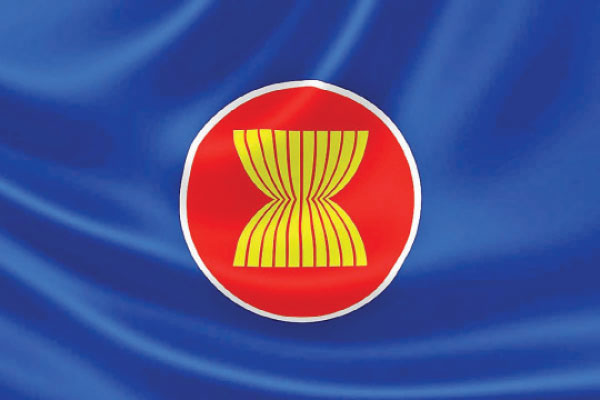
Dr Mohammad Kamrul Hasan
Regional integration is one of the defining features of contemporary international politics. While the Association of Southeast Asian Nations (ASEAN) has emerged as a successful model of multilateral cooperation, the South Asian Association for Regional Cooperation (SAARC) remains largely ineffective despite its vast potential. SAARC was formed in 1985 with the vision of promoting regional welfare, economic integration and collective self-reliance. Yet, nearly four decades later, the organisation is characterised by political mistrust and institutional fragility. In contrast, ASEAN, established in 1967, has evolved from a politically fragile grouping into a globally recognised model of regionalism, encompassing diverse political systems and economic profiles.
Let us examine the issues of SAARC and the core strengths of ASEAN and explore policy pathways for reviving SAARC. SAARC has failed to become a vibrant regional platform. The anatomy of SAARC’s failure indicates several factors. The foremost reason behind SAARC’s paralysis is political and strategic rivalries, especially the enduring India–Pakistan rivalry.
Unlike ASEAN, where intra-bloc conflicts were mitigated early, SAARC’s progress has been consistently obstructed by bilateral hostilities. Regional organisations function effectively only when political leadership differentiates bilateral disputes from regional cooperation. ASEAN’s founding members “compartmentalised” conflicts while prioritising economic collaboration. In SAARC’s case, bilateral antagonisms dominate the regional agenda, creating a persistent deadlock.

Economic fragmentation and low intra-regional trade also contribute significantly. Intra-regional trade among SAARC countries stands at around 5% of their total trade volume, compared to 25% in ASEAN and 60% in the European Union. The South Asian Free Trade Area (SAFTA), launched in 2006, has failed due to non-tariff barriers, logistical bottlenecks and political restrictions, particularly between India and Pakistan. ASEAN’s expansion of AFTA (ASEAN Free Trade Area) since 1992 created shared economic interests that diluted political frictions. SAARC lacks the economic interdependence that fosters policy coordination.
Rigid decision-making by consensus has also played a role in its failure. SAARC’s Charter mandates unanimous approval for every decision. While intended to protect smaller states, this has created paralysis, as any single state can veto proposals. ASEAN, though formally consensus-driven, practices “flexible consensus”; members unwilling to participate simply abstain while others proceed (the “ASEAN Minus X” formula). Rigid unanimity in SAARC leads to lowest-common-denominator decision-making.
There also exists an absence of a shared regional identity. While ASEAN cultivated the concept of “ASEAN centrality” and a common identity, SAARC has struggled to generate cohesion. Historical animosities, religious polarisation, and divergent political ideologies have overshadowed South Asia’s shared linguistic and cultural heritage. Regional identity functions as a soft power glue that legitimises integration. Without it, cooperation remains transactional rather than transformative.
SAARC also suffers from institutional weakness and bureaucratic limitations. The SAARC Secretariat in Kathmandu operates with minimal resources and authority. It lacks the power to initiate policy, enforce compliance, or manage a significant regional budget. Most programmes depend on external funding, limiting institutional continuity.
On the other hand, ASEAN has become a strong regional forum for East Asian nations. Its success lies in non-interference and “constructive engagement”. The founding principle of non-interference has been pivotal in maintaining stability. Even amid ideological differences, member states avoided commenting on internal politics. Disputes were managed through quiet diplomacy rather than confrontation, allowing mutual trust and collective development.
ASEAN prioritised cooperation in trade, environment, education, and health before tackling sensitive political or security issues. Through successes in these “low-politics” areas, ASEAN built trust necessary for “high-politics” collaboration, such as defence dialogues and regional forums. This contrasts sharply with SAARC’s politically constrained structure. Additionally, ASEAN treated economic integration as a strategic instrument for peace. Initiatives such as the ASEAN Economic Community (AEC) and the Regional Comprehensive Economic Partnership (RCEP) positioned the bloc as a central player in global trade networks.
Based on ASEAN’s lessons, SAARC can be revived by adopting a few strategies. Adopting the “ASEAN Minus X” model can be crucial. SAARC could operationalise variable geometry—allowing willing countries to proceed with specific initiatives even if others abstain. Building economic interdependence is essential. Reviving SAFTA with digital trade protocols, harmonised standards, and regional value chains can enhance intra-SAARC commerce.
Infrastructure projects such as the Trans-South Asian Railway or energy-sharing grids could physically and economically integrate the region. Encouraging sub-regionalism is also important. Instead of viewing BIMSTEC, BBIN, or the Indian Ocean Rim Association as competing entities, SAARC can integrate these into its broader framework.
Moreover, promoting a South Asian identity through academic collaboration, regional media, and youth programmes can nurture a sense of shared destiny.
ASEAN’s trajectory illustrates that successful regionalism depends less on homogeneity and more on political pragmatism, institutional flexibility, and incremental trust-building. For South Asia, the path forward lies in depoliticising regional cooperation, empowering institutions, and nurturing economic interdependence that gradually transcends historical animosities.
____________________
The writer is a public
administration and policy analyst

